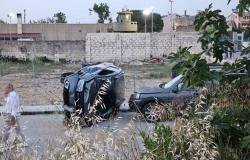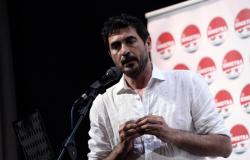(Arv) Venice 26 June 2024 – Paintings, busts, sculptures, monuments, but also direct testimonies to tell in an unprecedented way a great Pontiff, born in Riese, in the province of Treviso, parish priest in Salzano, bishop of Mantua and then patriarch of Venice until 1903, when he was elected to the papal throne. They were collected by Monsignor Lucio Bonora, priest of Caerano San Marco, former director of the Historical Archives of the diocese of Treviso and chancellor of the Curia, now official at the Vatican Secretariat of State, in the volume “Homage to Pius X, contemporary portraits”, Kappadue editions: 574 pages, 220 illustrations and the preface by Pope Francis. Fresh off the press, the volume was presented in Venice, at the headquarters of the Veneto Regional Council, by the President of the Council Roberto Ciambetti and the Secretary General Roberto Valente, in the name of the consolidated collaboration established between the Council and Monsignor. Bonora to celebrate the centenary of Saint Pius X, a Venetian parish priest who became Pope, and the deep bond that continues to unite Venice to Pope Sarto. “Mons. Bonora has done a great historical and research work, driven by his deep devotion to the Treviso Pope, a work that – Valente clarified – has been entirely self-financed”.
Pope Sarto, who died 110 years ago, already blessed ten years later and canonized in 1954, is remembered in the volume through around eighty artistic medallions: 16 portraits from the pre-papal period, 65 from the papal period and others inaugurated the day after his death . Works preserved in Italy, the Vatican, Romania, Austria, Croatia, France, Germany, Poland, Ireland, the United States, South America. Among the other sources of the research conducted by the author are the inventories of Ecclesiastical Heritage, Italian Cultural Heritage and the archives of period newspapers such as La Difesa di Venezia. The author explains: “From the man’s face his whole soul and personality shines through. Admiring these works, even today the figure of the holy pontiff penetrates the hearts of those who observe them.”
“Pope Pius , which establishes the identity of Christians and anchors the identity of Europe to its roots of faith. Pius X paved the way for Catholic participation in Italian political life. With his journey on the back of a mule to Cima Grappa in 1903 to consecrate the Madonnina, protector of the Venetian people, he entrusted this land to the one who would later become the ”Mater Dolorosa’ in the bloody tragedy of the Great War. Pope Sarto was a convinced supporter of peace, he made his voice heard against the war with the Ottoman Empire and any ambition of a crusade and was among the few to glimpse the abyss into which Europe and the world would fall. with the First World War. Bonora’s book – he concluded – not only gives us the human and spiritual profile of the parish priest who became pope, firm in his faith in Christ, but it gives us the face of the Church which is reflected in the images of the pontiff who came from Riese”.
At the origins of the book, the author explained, there is a long gestation that starts from the idea in 2012 of organizing an exhibition of works related to him in Treviso for the centenary of Pius and continued with the transfer of the relics to Veneto, which took place in October 2023 between Riese, Padua and Venice.
From the collected works – explained Mgr. Bonora – the soul of a shepherd of a solemn pontiff, yes, but first of all human, emerges. “The face of the sweet, tender and sometimes even melancholy Pope, his blue and penetrating eyes, the facial features, were all aspects that artists, such as the Venetian painter Alessandro Milesi, managed to convey into the hearts of the people of God through their works. From the face of the Pope we understand his person, his spiritual and social sensitivity, his pastoral work, the effort he made throughout his life to revive the faith of the Church and gather it around Christ, as the creator of all things, immersing the Church in Christ through Scripture, catechism and liturgy. His pastoral attention also went to the great social emergencies of his time: just think of what he did for the orphans of Calabria and for the earthquake victims, supporting 300 orphan minors out of his own pocket until they were professionally integrated; to what he declared in defense of the American Indians; how much he deplored the mentalities of the powerful who guided the fate of the world through war; his crying at the outbreak of the war, saying goodbye to the seminarians who were leaving for the front; to what he did for Catholic schools; to the personal outlays that he reserved for seminarians from different parts of Italy to support them in their studies and food; even to the alms he gave for masses to needy priests; to the defense of abandoned girls and victims of rape, especially when he was in Venice. His face says it all, it expresses the pastor, the man of charity, the man of God who was responsible for the universal mission of the Church and the need to bring it back to its apostolic origins”.
“Long live Saint Pius making the profound and intimate harmonies that link the two pontificates even more explicit.
On Monday 1 July the volume “Homage to Pius





